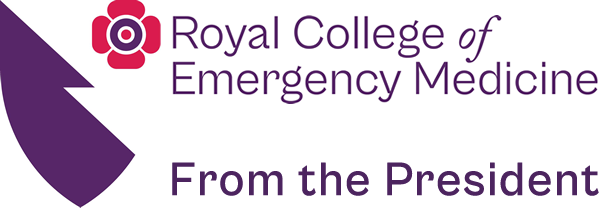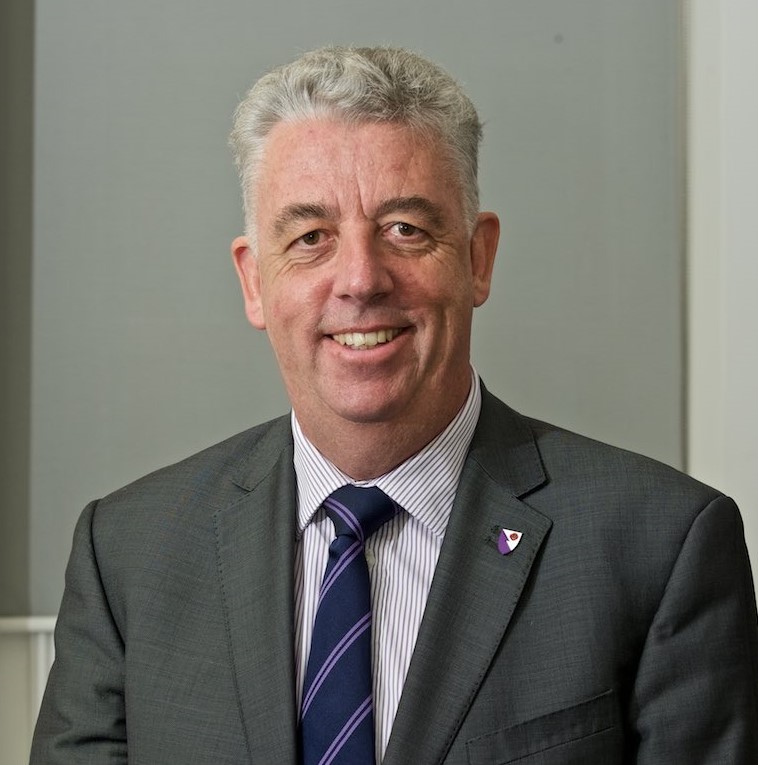October and the season of mists and mellow fruitfulness! We are approaching the first anniversary of the launch of the ‘College 10 priorities campaign’ and we can celebrate a major achievement – namely a substantial increase in the numbers of doctors recruited to both CT1 and CT3 posts via the HEE funded expansion in ACCS EM posts and the GMC recognition of transferable competencies through the newly established DREEM schemes. Much credit must go to Wendy Reid and Patrick Mitchell of Health Education England as well as to Kevin Reynard who as Dean has led the work of the College on these matters.
I wrote to all fellows and members in August to highlight this achievement. However the College is equally mindful of the need to both sustain these recruitment rates whilst simultaneously addressing the related issue of retention.
The policy activities of the College are currently focused on influencing politicians of all parties and highlighting the key reforms required to ensure acute and emergency care is both safe an sustainable.
Our approach has been one of both collating data and integrating this into clear and concise information to provide a quantitative argument. We are also aware that for many of the people we wish to persuade and inform there is great value in a more narrative approach. To this end the College has been fortunate enough to obtain prime space within the party conference editions of parliament’s own magazine ‘The House’. Our message will be on the page opposite the Secretary of State, Jeremy Hunt, the shadow Secretary of State, Andy Burnham and the Health Minister Norman Lamb.
The issues raised are common to all EDs, the length and breadth of the UK and Ireland. The publication is read by MPs, constituency workers, journalists, commentators and policy advisors. Below is the transcript which I hope you will agree highlights many of the key points of our ‘CEM10’ strategy:
An 82 year old man with severe dementia and advanced cancer is brought in from a nursing home on Saturday night and dies in the company of strangers in a noisy emergency department.
The College believes that the inconvenience and indignity of similar inappropriate events is matched only by the frequency with which they occur. Not all urgent care, can or should be provided in an emergency department.
‘Hospital penalised for treating the sick and injured’
Extraordinary though this statement is, the current funding systems create a daily dilemma for all trust executives. To balance the books ever greater numbers of elective surgical patients must be accommodated so that the revenue from their care can cross subsidise those misfortunate enough to suffer an acute life threatening illness or injury.
‘Millions wasted on short term Agency staff in A&E Units’
Last year over £150 million pounds was spent on medical locums in A&E departments. This is almost 3/4 million pounds per department! More alarmingly it is more than the current total salary bill for all the Emergency Medicine consultants in the UK. This money should be spent more strategically to reverse the current crisis of A&E recruitment and retention.
‘My mother waited 8 hours on an ambulance stretcher’
Lack of patient flow through an A&E department is the single most pernicious way to render the system both inefficient and ineffective. Not only are paramedics unable to attend other 999 calls but patient outcomes are worsened; more pain, less care, more deaths. These all arise when the exit from an A&E is effectively blocked because of a lack of available hospital beds for those patients requiring admission.
Patients deserve better care than this.
Over the last 2 years the College has campaigned to address this toxic mixture of under-resourcing and over-spending. Fortunately other voices have joined us, politicians of all parties, Medical Education Providers, other Medical Colleges, NHS Organisations and many others.
The College now strives to act as a catalyst for action to remedy the current quagmire of unintended consequences and perverse incentives: we must build an urgent and emergency care system that provides patient focussed, safe, effective and efficient care.
The coming winter will see increased pressure on ED services and renewed interest in our departments. The College will strive to reinforce the issues of safety and sustainability and avoid ‘soundbite criticism’ of others. We have achieved a good deal of consensus on issues from ‘exit block’ and ‘crowding’, to trust finances and terms & conditions. We will hold others to account if and when such consensus is not translated into action.
I hope to see many of you at our National EM Leaders day next month at the British Library and as ever welcome any feedback from all and any member or Fellow of the College.
Dr Cliff Mann FCEM FRCP
President
The College of Emergency Medicine
@CEMPresident


